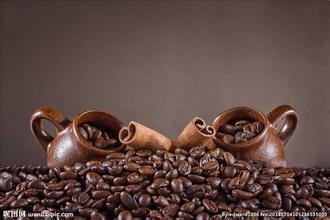Ethiopian Coffee Yega Sheffield Coffee beans Ethiopian Coffee Sidamo producing area
According to the above four different modes of production, Ethiopian coffee can be divided into nine major coffee producing areas, including five boutique coffee areas: Sidamo, Yegashefi, Harald, Lim and Lekampu. and four general commercial bean producing areas: Gemma, Irugbo, Tibby and Bekaa. The sun or water washing methods are used in each district, and different treatment methods also affect the flavor. Egypt traditionally uses the ancient sun treatment, but since the introduction of water washing technology in 1972, it has gradually increased the ratio of water washed beans for more than 30 years. At present, the sun method accounts for about 80%, and water washing accounts for about ⒛%. Sidamo and Yejia Xuefei are mainly washed with mouth drying as a supplement, while Lim and Tiebi producing areas are mainly washed with water. Sun-dried beans are mainly Harald, Gemma, Lekampudi and Yilu Gbagbo.
Sidamo: 1400 to 2200 meters above sea level, it is a famous boutique coffee area in southern Egypt, bordering Kenya, with two kinds of washing and sun exposure. The washed sidamole is light green and the beans are small and oval. The palate has citrus aromas with a hint of raspberries, as well as pleasant elegant sweet and sour flavors, sweet grapes and a chocolate finish. Sun Sidamo's bean color is yellowish green, the bean phase is not neat, and it is common to lack carob beans. Properly handled sun Sidamo flavor is not discounted, in addition to the citrus flavor of washed beans, there is a strong fruit aroma. This is related to the fact that coffee beans are dried in the pulp and fermented for up to two weeks. This flavor is not commonly found in washed beans. However, once the sun is not handled properly, it is easy to have a fishy smell and lose all its elegant aroma. Sun beans are not good if they don't have a strong fruit flavor.
There are many legends in this area that King Solomon's lost treasure is said to be buried in the Deva Valley in the south. There are dense forests here, and there have been wild coffee forests since ancient times. It is a major feature for farmers to select excellent varieties of coffee trees from woodland and transplant them to their own farmland. Shaquiso is the most famous coffee producer in the south of Sidamo. Coffee tastes like lemon and honey. Yejasuefi is a small town with an elevation of 1200 to 2100 meters, which is also synonymous with Ethiopian boutique beans. It has been a wetland since ancient times, and the ancient saying "Yejia" means "settle down", and "Xuefei" means "wetland", so "Yejiaxuefei" means "let us settle down in this wetland".
Strictly speaking, Yega Xuefei is a by-product area of Sidamo. Located in the northwest of Sidamo, with mountains and lakes, the town is one of the highest coffee-producing areas in Egypt. However, the mode of production and flavor here are so outstanding that Egyptian coffee farmers compete to be proud of the flavor of their coffee, so they are independent from Sidamo and become the most famous producing area in Africa.
At first, Yejasuefei's coffee trees were planted by European monks (somewhat similar to Belgian monks who advocated planting wheat and brewing beer), and later by farmers or cooperatives. Yega Xuefei is actually built by surrounding coffee communities or cooperatives, including Edido, Hafusha, Hama and Bdon near the Fog Valley.
Most coffee beans are washed with water, but a few peas are deliberately sunburned to enhance their charming fruit aroma and mellow thickness. These mountain villages are foggy, like spring all year round, with a gentle breeze in summer, cool but not hot, rain but not damp, and no cold damage in winter, giving birth to a unique "regional flavor" of citrus and flower fragrance. Caffeine F trees are mostly planted in farmers' own backyards or mixed with other crops in farmland, and the yield per household is not much, which is a typical pastoral coffee. Almost all of the award-winning beans come from the above-mentioned coffee villages and communities.
The so-called "Yega Chuefei" refers to strong aromas of jasmine, lemon or green citric acid, as well as sweet peaches, almonds and tea. The author's tasting experience has only one sentence: "Coffee entrance, flowers in full bloom!" Except for the comfort of the taste buds and olfactory cells in the nasal cavity touched by flowers. In addition to the fragrance of flowers, the delicate mellow thickness is like silk and feels wonderful to the touch. At present, many coffee chemists begin to study the microclimate and soil and water around Yega Xuefei, in order to sum up the planting equation of fine coffee.

Important Notice :
前街咖啡 FrontStreet Coffee has moved to new addredd:
FrontStreet Coffee Address: 315,Donghua East Road,GuangZhou
Tel:020 38364473
- Prev

Ethiopian Sun-Sitama Ethiopian Coffee Bean Introduction
SIDAMO G-1 SPECITLTY PRODUCTION AREA: GUJI PRODUCTION AREA ALTITUDE: 1900-2200 METERS VARIETY: Arabica BEAN SEED: HEIRLOOM TREATMENT: Sun-drying, Shelter-drying Product Specifications: 60kg sacks Outer packaging lined with American patent GRAIN PRO bag Flavor: red wine, lemon, citrus fragrance, jasmine flower fragrance, peach juice, unique flavor fruit drink.
- Next

Ethiopian Sunlight Sidamo Coffee Beans Ethiopian Raw Coffee Beans
The birthplace of coffee-Ethiopia. The coffee tree originated in Ethiopia, where it was originally a wild plant, and the name coffee comes from the Ethiopian town of Kaffa. In fact, many coffee trees in Ethiopia are still wild plants, and the coffee grown on this coffee tree is full of particles and slightly fragrant. Humans may have been as early as the 9th century
Related
- Does Rose Summer choose Blue, Green or Red? Detailed explanation of Rose Summer Coffee plots and Classification in Panamanian Jade Manor
- What is the difference between the origin, producing area, processing plant, cooperative and manor of coffee beans?
- How fine does the espresso powder fit? how to grind the espresso?
- Sca coffee roasting degree color card coffee roasting degree 8 roasting color values what do you mean?
- The practice of lattes: how to make lattes at home
- Introduction to Indonesian Fine Coffee beans-- Java Coffee producing area of Indonesian Arabica Coffee
- How much will the flavor of light and medium roasted rose summer be expressed? What baking level is rose summer suitable for?
- Introduction to the characteristics of washing, sun-drying or wet-planing coffee commonly used in Mantenin, Indonesia
- Price characteristics of Arabica Coffee Bean Starbucks introduction to Manning Coffee Bean Taste producing area Variety Manor
- What is the authentic Yega flavor? What are the flavor characteristics of the really excellent Yejasuffi coffee beans?

